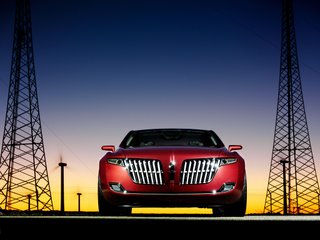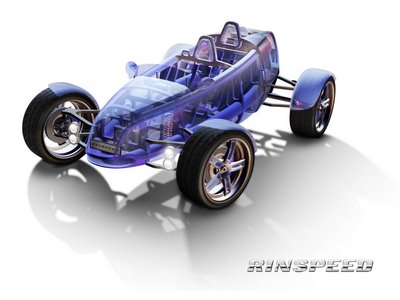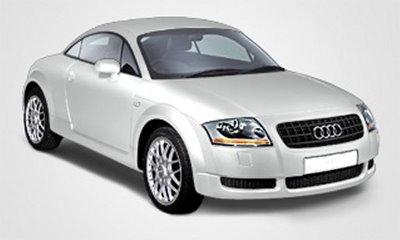Beck LM 800
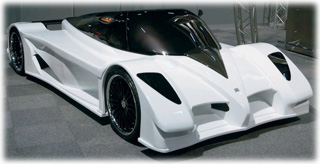 Berne Beck Engineering & Composits GmbH from Muri near Berne in Switzerland is presenting an exciting new product at the luxury motor show in Vienna: On 10 January 2007 the new Beck LM 800 will be shown to the world’s public for the first time.
Berne Beck Engineering & Composits GmbH from Muri near Berne in Switzerland is presenting an exciting new product at the luxury motor show in Vienna: On 10 January 2007 the new Beck LM 800 will be shown to the world’s public for the first time.The company is a small Swiss manufacturer that has specialised in the production of top class, super sports cars. The main features here are the lightweight construction and the associated use of the most varied of low-density materials, such as aluminium, magnesium, titanium, as well as the latest plastic and composite materials – Kevlar for instance. It goes without saying that, according to Swiss tradition, the highest demands in terms of quality apply here as well.
The company gets its name from Renй Beck, who can look back on a history of over 20 years in the construction of prototypes and vehicles. Even when he was a schoolboy, in every free minute he was already fiddling around with home-made sports cars and working on his dream. His motto then is still the same now: „We start at the point where others have already given up.“
Much in the fields of lightweight construction and highly refined aerodynamics has been borrowed from nature, as nature always demonstrates an enormously high level of efficiency in all its „designs“. Also, some solutions have their origins in Formula 1 when it comes to both technical components and the construction methods used in the car.
The very low drag coefficient (cw value) resulted from a reduction in the cross-sectional area of the vehicle to an absolute minimum. There is no superfluous material to impede the lines, so that the consistent implementation of „form follows function” has led to a very special appearance with its own highly technically- and performance-orientated, futuristic aesthetic.
The Beck LM 800 is a car that imparts a feeling of pure enjoyment of sport from within, has optimal driving characteristics thanks to its active, electronically controlled chassis and has enormous power reserves at its disposal as a result of its very light weight. In addition, the vehicle is very easy to maintain, thanks to its modular construction and telescopic jacking system.
The basic construction of the car is similar to a Formula 1 racing car with a central monocoque made of composite materials that protect the driver and provide the necessary rigidity. Fixed to this are the engine and gearbox support, as well as the front transverse control arms of the chassis.
The central monocoque takes all the static load and provides the car with its necessary rigidity. It is made up from an aluminium frame and the latest composite materials. The same material mix of carbon, Kevlar and aluminium that is used for the monocoque is also used for various bodywork parts. This has the big advantage that the new regulations governing personal protection have already been implemented.
All attachment parts are made of a high-strength aluminium alloy. They are milled out of solid pieces, undergo surface treatment and are then power coated.
The top four layers of the visible parts are made of carbon and the fabric and leather covered components are made of 100% Kevlar. All parts are screwed and/or glued together. The ergonomically shaped seats are produced specially and made of several layers of Kevlar which are then well upholstered. The digital instruments satisfy even the toughest demands.
The car has an electronically controlled, hydraulic active chassis, as normally used in Formula 1 cars, which reacts to all telemetry data. The wheels are also made from specially manufactured aluminium parts, milled out of solid pieces and then coated.
The engine is a V8 with a displacement of 4.2 litres, also equipped with a turbo-charger that has been specially produced for the Beck LM 800. A semi-sequential, 7-speed gearbox ensures smooth power transmission to the wheels via a limited slip differential, with plenty in reserve at 650 HP. Gear changing takes place either with a conventional gearstick or using a rocker switch on the steering wheel.
The built-in pneumatic jacking system, making tyre changing child’s play, is very innovative in a car approved for street use, as it is normally used on racing cars.





 Aston Martin has confirmed details of its N24 race car, based on the critically acclaimed V8 Vantage road car, which will be showcased at the Autosport International Show this week.
Aston Martin has confirmed details of its N24 race car, based on the critically acclaimed V8 Vantage road car, which will be showcased at the Autosport International Show this week.
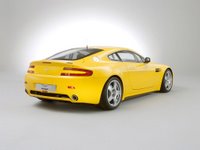


 The LF-A sports-car concept was originally shown at the 2005 NAIAS to express a bold new direction in styling for the Lexus brand. The goals for the new LF-A are no different than they were with the original concept: To build a supercar with world-class performance that is uniquely Lexus.
The LF-A sports-car concept was originally shown at the 2005 NAIAS to express a bold new direction in styling for the Lexus brand. The goals for the new LF-A are no different than they were with the original concept: To build a supercar with world-class performance that is uniquely Lexus.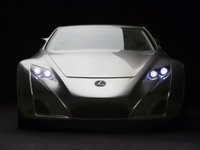



 The Chevrolet Camaro concept was the celebrated star of the 2006 auto show season. You can only top that by literally and figuratively blowing the top off. That’s exactly what GM’s designers and engineers did to create the Camaro convertible concept. The introduction of the Camaro convertible concept was on the eve of the North American International Auto Show at GM Style, an exclusive, fashion-splashed event combining celebrities, couture and automobiles.
The Chevrolet Camaro concept was the celebrated star of the 2006 auto show season. You can only top that by literally and figuratively blowing the top off. That’s exactly what GM’s designers and engineers did to create the Camaro convertible concept. The introduction of the Camaro convertible concept was on the eve of the North American International Auto Show at GM Style, an exclusive, fashion-splashed event combining celebrities, couture and automobiles.



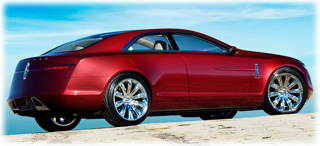 Lincoln is pulling the wraps off a head-turning new concept car at the North American International Auto Show next week, signaling its design strategy for the next-generation of premium American vehicles and launching a new engine family.
Lincoln is pulling the wraps off a head-turning new concept car at the North American International Auto Show next week, signaling its design strategy for the next-generation of premium American vehicles and launching a new engine family.